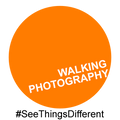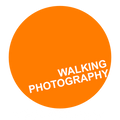Best Camera Settings for Handheld Photography

Two Minute Photo Tips Video:
Handheld Camera Settings Top Tips
(transcript)
I'm just about to lead a workshop here at Heart Castle Crags, which is going to be great, looking at moving water and some of the wooden flowers like the bluebells that we've got, and some of the wooden scenes. It's fantastic because just the foliage is just starting to come out but not fully out, so it's really vibrant and still letting lots of light through that tree canopy. It really is quite special here. But just before I start that, I thought I'd share a quick video on my sort of tips for walking around handheld with a DSLR camera because we'll be getting out with our cameras a little bit more now that the sun's out and it's getting warmer. I thought you might benefit from some of my tips on how I go about walking around, you know, walking around with the family with my camera and trying not to hold them up too much.
So, you know, in those sort of situations, you don't want to be setting up your tripod and taking a long time to set up the photo. When I'm walking around with my DSLR camera, I'll tend to set it up on a base setting and then adjust it from there. So, that will really largely depend on the light. If it's a bright day, it might be something like 500th of a second at f/8. If it's a darker day, it might be 200th of a second and f/5.6. But what I am doing is I'm leaving that ISO on auto, so I'm making sure that the ISO is set to Auto. That way, I can allow a bit of flexibility in that exposure triangle to keep that exposure balanced for me.
So, then what I'll do is I'll find a scene where I really want a large depth of field and I want really clear clarity throughout from front to back of the picture. I'll set it up, set the camera settings up at something like 200th per second and f/11, and then I'll just see what the ISO is doing. If the ISO is less than, say, 400, I'm pretty happy. If it's higher than 400 and the ISO quality is important to me, what I'll do then is I probably won't want to sacrifice the shutter speed too much. I might, if I'm feeling confident, take it down to 100th of a second and then maybe drop the aperture to something like f/8, something like that. But the key thing here really is just keeping the quality going from now on brighter days. It's not going to be a problem. I might even have to set the shutter speed to 500th of a second and f/11. So, that's going to give me those kind of really good quality photos with clarity from front to back, acceptable focus.
Then, if, say, I wanted to capture someone jumping off of a rock or some kind of action shot, maybe there's a squirrel on a branch, then what I'll do, I'll automatically take that F number down to something like f/5.6 or f/4, however low it will go, and crank up the shutter speed, so it's up to one thousandth of a second, anywhere between a thousandth of a second and two thousandth of a second. That way, I can ensure I can freeze the movement and action. So, every time while I'm walking, I'm assessing what the light's doing, how bright the conditions are, and what effect I want to have. But essentially, changing to manual with an auto ISO is a really good way of walking around and being able to grab photos that are still really good quality but don't take up too much of your time. So, you're not holding everyone up or you're trying, you're making the best effort not to hold everyone up, at least anyway. That's my quick tip for you for walking around with a camera handheld, and I hope that's of use, and I hope you'll get an opportunity to try that out plenty of times in the months ahead.




Leave a comment